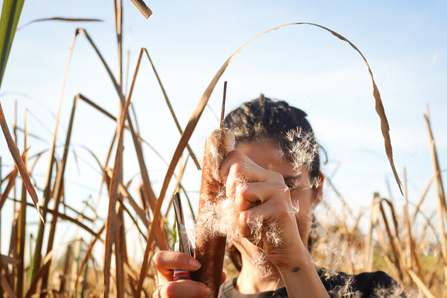The Wildlife Trust for Lancashire, Manchester and North Merseyside, Saltyco® and Peel L&P have announced plans to use new funding to enable bulrushes to be grown near Salford. The fluffy seed heads being turned into a revolutionary new textile to fill padded jackets.
Bulrushes can often be seen growing wild along pond edges and other areas of waterlogged ground. With their tall fibrous stalks and fluffy dark brown seed heads they are one of our most recognisable plants – but could bulrushes also make sustainable filling for padded jackets and eco-friendly building materials, whilst also fighting climate change and nature loss, and helping support our farming communities?

